Are You The Universe?
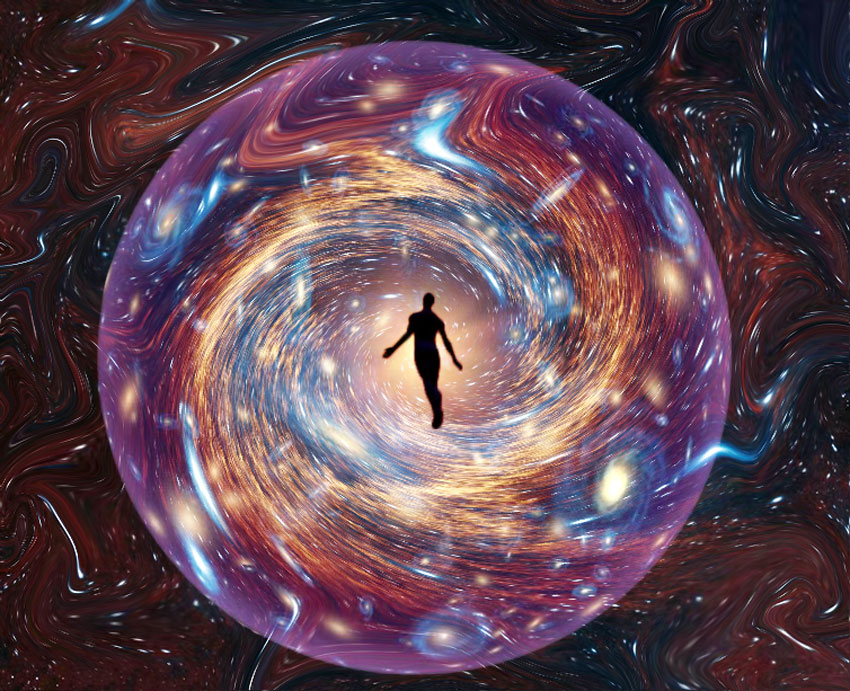 by Robert Lanza & Bob Berman
by Robert Lanza & Bob Berman
Figuring out the nature of the “real world” has obsessed scientists and philosophers for millennia. In the past few decades, however, major puzzles of mainstream science have forced a re-evaluation of the nature of the cosmos. Starting in the 1920’s, scientists found that some experiments’ results totally depended on whether anyone was watching. The observer critically influenced the outcome. Since then, paradoxes accompanying the Big Bang theory (how can an entire universe pop out of nothingness?), and other major, intractable problems of cosmology (e.g. what is this dark energy that seems to be blowing the universe apart) suggest that our models require a seismic shift.
At this pivotal point in science, medical doctor Robert Lanza and I believe a more accurate understanding of the “real world” will require combining astrophysics and biology instead of keeping them separate, and putting observers firmly into the equation. This view is called biocentrism.
One critical key to many of physical science’s puzzles has been shunted out of the way simply because we didn’t know what to do with it. This – consciousness – is not a small item. It is not like anything else. Consciousness, meaning awareness or perception, in an utter mystery for biology and physics alike, has somehow arisen from molecules and goo. How did inert, random bits of carbon ever morph into that Japanese guy who always wins the hot dog eating contest?
The intractable problem of origins aside, human awareness is not just some pesky byproduct or irrelevant item, the way a buzzing mosquito might interfere with a biologist’s concentration. Rather, consciousness is the matrix upon which the cosmos is apprehended, and stands at the critical forefront of the role played by the observer. As we more fully understand this, several long-held puzzles immediately yield answers.
Undeniably it is the biological creature that makes the observations and creates the theories. For example, we observe the universe solely through the medium of light. But on its own, light doesn’t HAVE any color, nor any brightness, nor any visual characteristics at all. It’s merely an invisible electrical and magnetic phenomenon. So while you may think that the moon as you remember it is “there” when no one’s looking at it, nothing remotely resembling what you can imagine could be present when a consciousness is not interacting.
Now You See It. . .
Physicists say that the particles that make up our universe only take form when their individual “wave-function” collapses. Starting in the 1920s, and accelerating with John Bell’s work in the 1960s, it has became increasingly clear that any possible way the experimenter could take a look at an object would collapse the wave function.
Before these experiments of the past few decades, it was still considered possible that Einstein was right in thinking that “local realism” – an objective independent universe – could be the truth. And that physical states exist before they are measured. Before Bell’s work of the 1960s, it was still widely believed that particles have definite attributes and values independent of the act of measuring. And, it used to be assumed, if observers are sufficiently far apart, they can remain utterly unaffected by the goings-on elsewhere. All this is now gone for keeps.
No Time to Lose
Quantum revelations and the universe’s curious physical parameters (the fact that 200 physical parameters and forces are just perfect for life’s existence) strongly suggests a biocentric basis for the cosmos. Oddly enough, so do space and time. According to biocentrism, time simply does not exist independent of life that notices it.
The reality of time has long been questioned by an odd alliance of philosophers and physicists. The former argue that the past exists only as ideas in the mind, which themselves are solely neuroelectrical events occurring strictly in the present moment. Physicists, for their part, find that when people speak of time, they’re usually referring to change. But change is not the same thing as time.
Time is the animal sense that animates events. Everything you perceive – even this page — is actively and repeatedly being reconstructed inside your head in an organized whirl of information. Time can be defined as the summation of spatial states; the same thing measured with our scientific instruments is called momentum.
The weaving together of these individual information frames occurs in the mind. So what’s real? We confront a here-and-now. If the next “image” is different from the last, then it is different, period. We can award that change with the word “time” but that doesn’t mean there’s an actual entity, as real as cheddar cheese, that forms a matrix or grid in which changes occur. That’s just our own way of making sense of things, our tool of perception. We watch our loved ones age and die, and assume an external entity called time is responsible for the crime.
The demotion of time from an actual reality to a mere subjective experience, a social convention, is evidence against the “external universe” mindset, because the latter requires a space and time gridwork. In biocentrism, space and time are forms of animal understanding. We carry them around with us like turtles with shells. There simply is no self-existing matrix out there in which physical events occur independent of life.
There is a peculiar intangibility about space, as well. We cannot pick it up and bring it to the laboratory. This is because, like time, space is neither physical nor fundamentally real. Like time, it is a mode of interpretation and understanding. It is part of an animal’s mental software that molds sensations into multidimensional objects. In modern everyday life, however, we’ve come to regard space as sort of a vast container that has no walls. But our notion of space is false. Shall we count the ways? 1. Empty space is in fact not empty. 2. Distances between objects can and do mutate depending on conditions like gravity and speed, so that no absolute distance exists between anything and anything else. 3. Quantum theory casts serious doubt about whether even distant individual items are truly separated at all, since entangled particles act in unison even if separated by the width of a galaxy, and 4) We often define separations and boundaries between objects in terms of language, convention, and utility. In truth, there is no self-existing space/time matrix in which physical events occur independently of life.
Now, space and time illusions are certainly harmless. A problem only arises because, by treating space as something physical, existing in itself, science imparts a completely wrong starting point for investigations into the nature of reality. Allowing the observer into the equation as the late Nobel laureate John Wheeler insists is necessary, would open the possibilities for new ways of cognition that might make everything work better.
Are You The Universe?
Obviously, nothing can be cognized that is not already interacting with your consciousness. Since perceived images are experientially real and not imaginary, they must be physically happening in some location. Human physiology texts answer this without ambiguity. Although the retina absorbs photons that deliver their payloads of bits of electromagnetic energy, the actual perception of images physically occur in the back of the brain, augmented by other nearby locations, in special sections that are as vast and labyrinthine as the hallways of the Milky Way, and contain as many neurons as there are stars in the galaxy. This is where the actual colors, shapes, and movement “happen.” This is where they are perceived or cognized.
If you try to consciously access that visual part of the brain, it’s easy. It’s not subjectively dark and mushy. You’re already effortlessly perceiving it with every glance you take. Custom has told us that what we see is “out there,” outside ourselves, and such a viewpoint is fine and necessary in terms of language and utility, as in “please pass the butter that’s over there.” But make no mistake: The butter itself exists only within the mind. It is the only place visual (and tactile and olfactory) images are perceived and hence located.
Some may imagine that there are two worlds, one “out there” and a separate one being cognized inside the skull. But the “two worlds” model is a myth. Only one visual reality is extant; it is the one that requires consciousness in order to manifest. Now, this “one universe” model may seem like a bit of dorm-level philosophy. But it explains otherwise bewildering experimental results.
Quantum mechanics describes the tiny world of the atom with stunning if probabilistic accuracy. Since quantum theory tells us that everything in nature has a particle nature and a wave nature, and that the object’s behavior exists only as probabilities, no small object actually assumes a particular place or motion until a particular moment when it suddenly manifests as an actual entity in a real place. Physicists call this moment of materialization “the collapse of the wave function.” What accomplishes this? Messing with the electron or photon. Hitting it with a bit of light in order to “take its picture” would instantly do the job. But starting in the 1920s, and accelerating with John Bell’s work in the 1960s, it has became increasingly clear that any possible way the experimenter could “take a look” at the object would collapse the wave function. In a sense, the experiment has been contaminated. But as more sophisticated approaches were devised, it became obvious that mere knowledge in the experimenter’s mind is sufficient to cause the wave function to collapse.
That was freaky, but it got worse. When entangled particles are created, the pair share a wave function. When one member’s wave function collapses, so will the other’s – even if they are separated by the width of the universe. This means that if one particle is observed to have an “up spin” the act of observation causes the other to instantly go from being a mere probability wave to an actual particle with the opposite spin. They are intimately linked, and in a way that acts as if there’s no space between them, nor any time delay in conveying the “news.”
Experiments from 1997 to 2007 have shown that this is indeed the case, and prove that Einstein’s insistence on “locality” – meaning that nothing can influence anything else at superluminal speeds – is wrong. Rather, the entities we observe are floating in a field — a field of mind, we believe — that is not limited by the external spacetime constraints Einstein theorized a century ago. Bell’s Theorem of 1964, shown experimentally to be true over and over in the intervening years, does more than merely demolish all vestiges of Einstein’s hopes that locality can be maintained. Before Bell, it was still considered possible (though increasingly problematical) that local realism – an objective independent universe – could be the truth. Before Bell, many still clung to the millennia-old assumption that physical states exist before they are measured. Before Bell, it was still widely believed that particles have definite attributes and values independent of the act of measuring. And, finally, thanks to Einstein’s demonstrations that no “information” can travel faster than light, it was assumed that if observers are sufficiently far apart, a measurement by one has no effect on the measurement by the other.
All of the above are now finished for keeps. In addition, three major, separate areas of quantum theory make sense if the universe is understood as a “field” but are bewildering otherwise. Without such symbiosis, attempts to truly understand the universe as a whole will remain a train to nowhere. In all these ways, the behavior of the “external world” is inextricably linked to the presence of an observer.
Posted in Science For The New Agewith 1 comment.


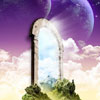
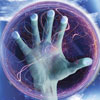
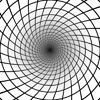
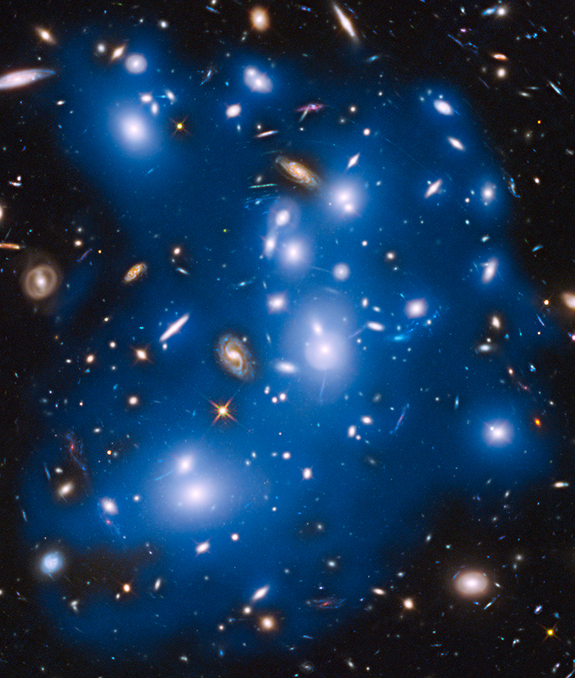
Yes very true- you really are the god of your own universe your own unique universe as your position in space and time changes from birth to now shows your own unique experiences that shaped who you are negative minded or positive everything collapsing perfectly into view depending on your mindset as the seconds pass.